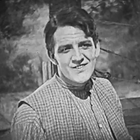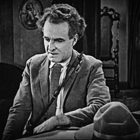 Carl Stockdale
Carl Stockdale
Thomas Gains Mary Carr
Mary Carr
Mary Gains Johnnie Walker
Johnnie Walker
Johnnie Gains Cuyler Supplee
Cuyler Supplee
Silas Gains Mark Fenton
Mark Fenton
John J. Burrows David Kirby
David Kirby
Jim Fuller- Gloria Grey
Gretchen Schultz  Rosemary Cooper
Rosemary Cooper
Zelda Burrows Richard Morris
Richard Morris
Grandpa Gains- Dick Brandon
Little Johnnie Gains - Emory Johnson
Director
fiction.wikisort.org - Movie
The Spirit of the USA is a 1924 American silent drama film directed by Emory Johnson and written by Emilie Johnson. The film stars Johnnie Walker and Mary Carr. The film was released on May 18, 1924 by FBO.[1][2]
| The Spirit of the USA | |
|---|---|
 Film Daily advertisement | |
| Directed by | Emory Johnson |
| Written by | Emilie Johnson Story and Screenplay |
| Produced by | Pat Powers Emory Johnson |
| Starring | Johnnie Walker |
| Cinematography | Ross Fischer |
| Distributed by | Film Booking Offices of America |
Release date |
|
Running time | 9 reels |
| Country | United States |
| Language | Silent (English intertitles |
Plot
Emilie Johnson claimed Woodrow Wilson inspired this story. This film takes place during World War I.[3]

Thomas Gains Carl Stockdale and his wife, Mary Mary Carr, play a couple living on a farm with their two sons. Her oldest son is Johnnie, played by Johnnie Walker. Her youngest son is named Silas, played by Cuyler Supplee.
In April 1917, the U.S. joined the allies, declares war against Germany, and enters World War I. Overwhelmed with a sense of duty, Johnnie immediately wants to enlist in the Army. He is rejected. He then enlists in the Salvation Army and is shipped to Europe. His lazy, cowardly brother shrugs his duty, takes over the farm, and marries Zelda Burrows, played by Rosemary Cooper. Zelda's father, John Burrows, played by Mark Fenton, wants to acquire the Gains farm to build a dam – legally or otherwise.
Zelda teases Silas for staying home during the war. Showing Zelda, he's not a coward, Silas enlists in the Army. Silas is shipped to France and dies on the battlefield. Learning of her husband's death, Zelda takes control of the farm. Her father's lawyer, Jim Fuller, played by Dave Kirby, claims Johnnie has also been killed in Europe. Zelda promptly evicts Thomas and Mary from their home. Then Zelda claims the farm along with her father. Her father starts to build his dam.
Suddenly, Johnnie returns home. Everyone thought he had died in battle. After his return, he starts to restore order. Johnnie tosses Zelda off the farm, blows up the dam, and restores his parents' property. Then Johnnie finds out his sweetheart – Gretchen played by Gloria Grey has been waiting for him. Johnnie marries Gretchen, and they live happily ever after.[4]
Cast

Actor Role Johnnie Walker Johnnie Gains Mary Carr Mary Gains Carl Stockdale Thomas Gains Mark Fenton John J. Burrows William S. Hooser Otto Schultz Gloria Grey Gretchen Schultz Rosemary Cooper Zelda Burrows David Kirby Jim Fuller Cuyler Supplee Silas Gains Dick Brandon Little Johnnie Gains Newton House Little Silas Gains Richard Morris Grandpa Gains
Production
The original name of the photoplay was Swords and Plowshares.[5]
Emory Johnson and the cast spent several weeks shooting the movie in the vicinity of the Presidio, San Francisco.
The action scenes were filmed near Hollywood. Emory selected an area where the terrain mimicked the European battlegrounds of World War I. To make the battle scenes more realistic, Emory used High Explosives, fake Gas Shells, and mines. Many residents began to think the Japanese had started to invade California.
The area where the battle scenes were filmed was left so pock-marked, considerable effort was needed to make the land usable again.[6]
Preservation Status
A report created by film historian and archivist David Pierce for the Library of Congress claims:
- 75% of original silent-era films have perished.
- 14% of the 10,919 silent films released by major studios exist in their original 35mm or other formats.
- 11% survive in full-length foreign versions or on film formats of lesser image quality.[7][8] Many silent-era films did not survive for reasons as explained on this Wikipedia page.
Emory Johnson directed 13 films - 11 were silent, and 2 were Talkies. The Spirit of the USA was the fifth film in Emory Johnson's eight-picture contract with FBO. The film's length is listed at 9 reels. According to the Library of Congress website, this film has a status of - Completeness: abridgment and No holdings located in archives.[9]
A 15-minute excerpt is available on the Internet Archive The film segment is available on YouTube and from various DVD vendors
Gallery
References
- The Spirit of the USA The AFI Catalog of Feature Films
- "Silent Era : Progressive Silent Film List". www.silentera.com.
- "Idealism of Woodrow Wilson Inspired Theme of New Film". The Moving Picture World. The World Photographic Publishing Company. March 1, 1924. p. 31.
- The Spirit of the USA @ TCM.com
- The Spirit of the USA at IMDb
- "AT THE PALACE". Conway Springs Star (Northfield, Kansas). July 17, 1924. p. 7 – via genealogybank.com.
- Pierce, David. "The Survival of American Silent Films: 1912-1929" (PDF). Library Of Congress. Council on Library and Information Resources and the Library of Congress. Retrieved November 18, 2020.
- Slide, Anthony (2000). Nitrate Won't Wait: History of Film Preservation in the United States. McFarland. p. 5. ISBN 978-0786408368. Retrieved March 25, 2013.
It is often claimed that 75 percent of all American silent films are gone and 50 percent of all films made prior to 1950 are lost, but such figures, as archivists admit in private, were thought up on the spur of the moment, without statistical information to back them up.
- The Library of Congress American Silent Feature Film Survival Catalog: The Spirit of the U.S.A.
External links
- The Spirit of the USA at IMDb
- The Spirit of the USA at AllMovie
Другой контент может иметь иную лицензию. Перед использованием материалов сайта WikiSort.org внимательно изучите правила лицензирования конкретных элементов наполнения сайта.
WikiSort.org - проект по пересортировке и дополнению контента Википедии










